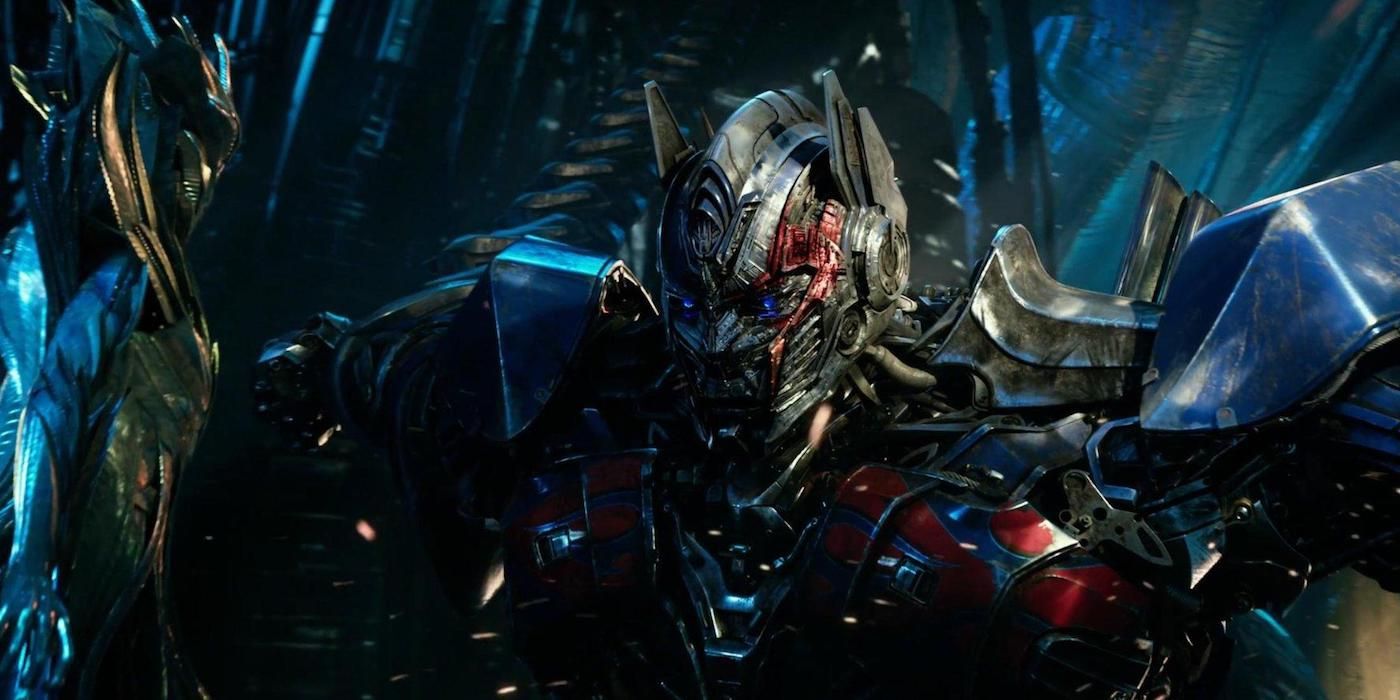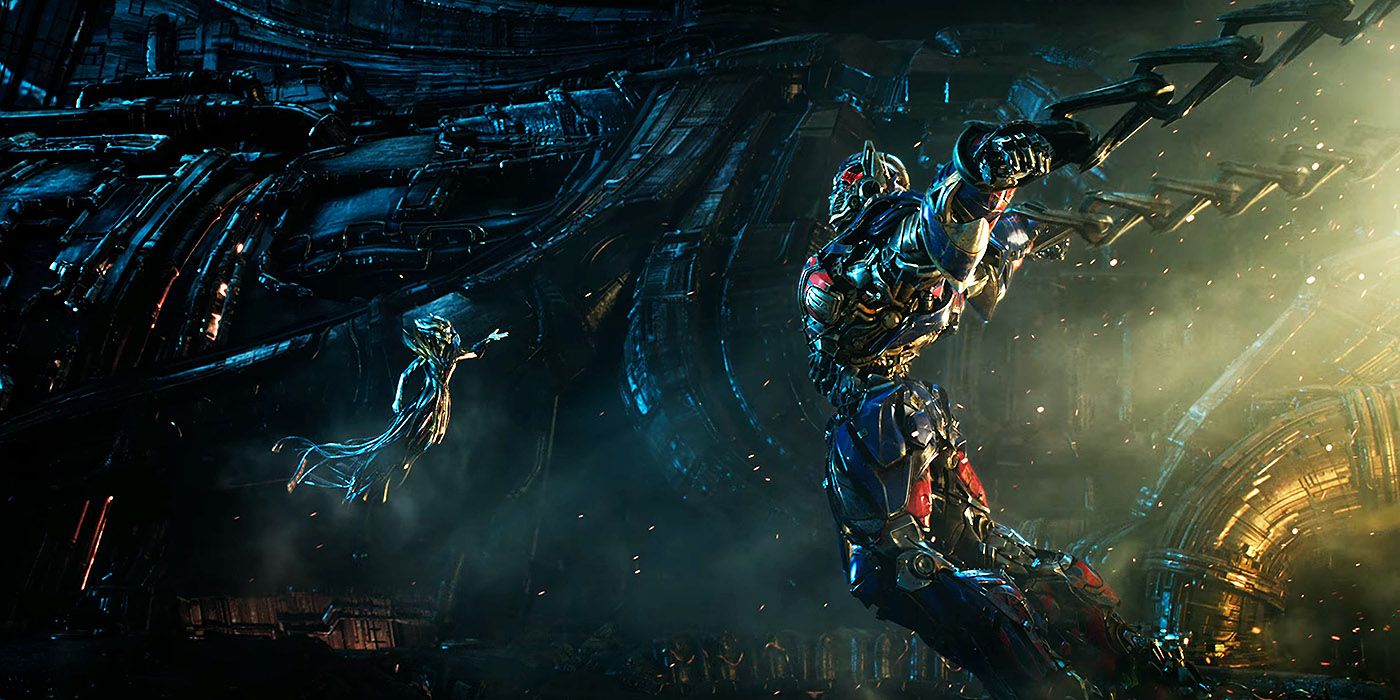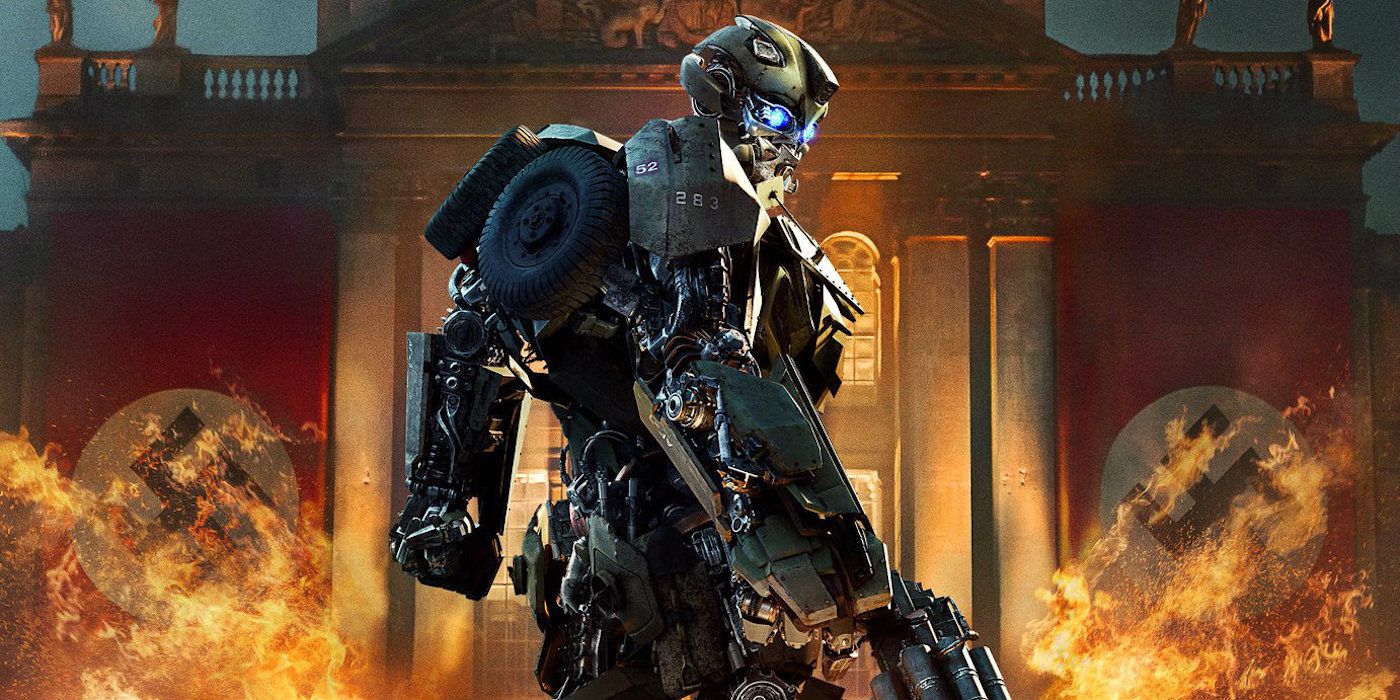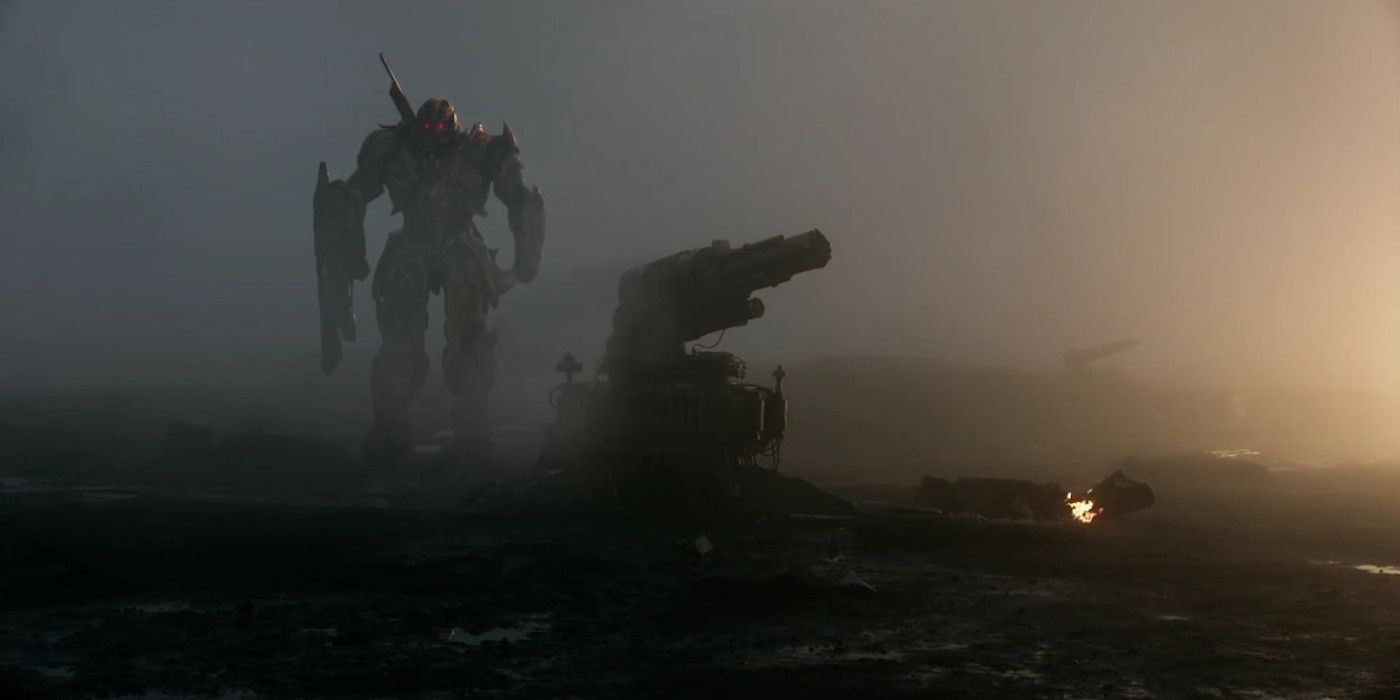When it comes to a Michael Bay-helmed Transformers flick, you know what you're getting yourself into the moment you buy your ticket. The big screen will be filled with lots of brawls and explosions, creating a cinematic spectacle meant to rock the summer box office. Transformers: The Last Knight gives you all of these in spades, and yet the box office returns have not been as stellar as previous installments. But though the sequel's financial success is heavily reliant on the film's performance internationally, Paramount and Hasbro are sure there's plenty of fuel left in the tank.
REVIEW: Transformers: The Last Knight Is a Michael Bay Clusterflick
Regardless of the movie's final take, Bay has made it clear that this is his final outing as a Transformers director. (Series star Mark Wahlberg, however, has hinted that the director could return to continue his work on the property.) Whatever Bay's level of involvement moving forward, Paramount is already planning a big expansion outside of the main movie franchise, with 14 spinoffs already in the works.
As of right now, the only thing we know for certain is that the Bumblebee-lefd solo film will take place in the past, before the first Transformers film, while The Last Knight's post-credits set the stage for a sixth installment in the main series. That said, there are quite a few directions they can take the warring Autobots and Decepticons, and with a little reading of the tea leaves, we break down the clues The Last Knight dropped.
The Wars (Plural) for Cybertron
At the end of The Last Knight, we saw the creator of all Cybertonians (Quintessa) plan foiled, preventing her from harnessing the power of the fallen Unicron (which in turn was revealed to be the planet Earth) in order to rebuild Cybertron. However, Optimus Prime was able to shake off her brainwashing as Nemesis Prime and unite the humans, Autobots and Quintessa's enemies (the original Knights of Cybertron marooned on Earth) to defeat the villainess and her combined army of Infernocons and Decepticons.
The film ended with Quintessa alive and well, ready to utilize the potential of Unicron again to reshape a Cybertron connected to Earth rather than overwriting it. With the Autobots attempting to colonize their former home once more, the road is clear for her to partner with Megatron yet again, and maybe even some humans who want the robot planet to leave Earth's presence. This opens the doors for a new war for Cybertron, with even deadlier alliances forged as Quintessa repurposes Unicron to be the devourer of worlds longtime fans of the franchise know him to be, rather than a dormant or in-stasis sentient planet.
There's also the option of losing and telling a Cybertron origin story which would inform a lot of things that factored into Bay's earlier movies. From Sentinel Prime, to the Fallen, to the Matrix of Leadership -- the key components that sparked the films' robot factions to hate each other are all filled with prime storytelling potential. In the original lore, Unicron was the polar opposite to Primus, which formed the basis of good and evil in the Transformers universe. Exploring this light-dark dynamic, the rivalry between Quintessa and her Knights, and why they turned on each other could fuel an entire film. We would also get a better understanding of the origins of the Autobots and Decepticons, and why sides were chosen before they all decided to head off in Earth's direction.
RELATED: Transformers: The Last Knight is 'a Final Chapter and a New Beginning'
History Holds More Than Meets The Eye
The flashback stories teased in The Last Knight present a lot of potential storylines to be explored via spinoffs. We already know the Bumblebee spinoff will take place in the '80s, and now we know Paramount can go even further A film exploring the Knights and how they partnered with Merlin in the Dark Ages, for example. The prospect of seeing the famous sorcerer interacting with the Knights and their combined form as Dragonstorm, further blurring history in terms of how magic and science relate while shaping the mythos of Excalibur and King Arthur's Knights of the Round Table is surely too enticing to pass up. There's a lot to develop there in terms of the Knights' reason for giving humanity a chance, and perhaps even how their ark crash-landing may have offered mankind the first seeds of modern technology.
Of course, the other major era teased in The Last Knight would be World War II, which treated moviegoers to robots (Bumblebee, in particular) battling Nazis. A prequel/spinoff set in this era would be amazing, and potentially lead to the exploration of the Transformers' participation or influence on other wartime eras throughout human history. Filmmakers can elaborate on the likes of the Cold War, or even Operation Desert Storm during the Gulf War, to illustrate that these robots really did have a strong hand in shaping modern history. Imagine seeing robots on either side of the line in these events, giving us a Russian submarine Transformer in the Reagan era, or one that was Hitler's bodyguard. It's difficult to deny the inherent appeal of these concept!
Let's Go Star-Trekking!
In The Last Knight, audiences saw Daytrader scavenge an airship for the Autobots to use in their strike against Quintessa's battalion. When the villains were defeated, the Autobots took to the ship and headed off to tend to an uninhabited Cybertron. Whether it's via this ship or new ones, as Optimus showed, there is a lot to explore in the deep, dark recesses of outer space. Now, the Autobots have the means to set forth and task an expedition team to boldly go where no robots have gone before, into the final frontier to meet new allies -- or to nip future threats in the bud before they manage to reach Earth and Cybertron's orbit.
Such a move would allow the franchise room to more logically introduce new Transformers, be they Autobot or Decepticon (Ultra Magnus!) while further developing peripheral ones, like Hot Rod, in an effort to shift the focus away from the familiar faces of Optimus and Bumblebee and expand on the aspect of legacy. It would also provide the chance to show new Autobot leaders taking charge in different territories. while providing a greater focus on the robots and a lesser one on the human aspect of things, which the previous Earth-centered films have done, time and time again.
Whatever the road (or roads) the franchise takes as it maps out its planned sequels, prequels and spinoffs, one thing's for certain: not even the sky is the limit.




